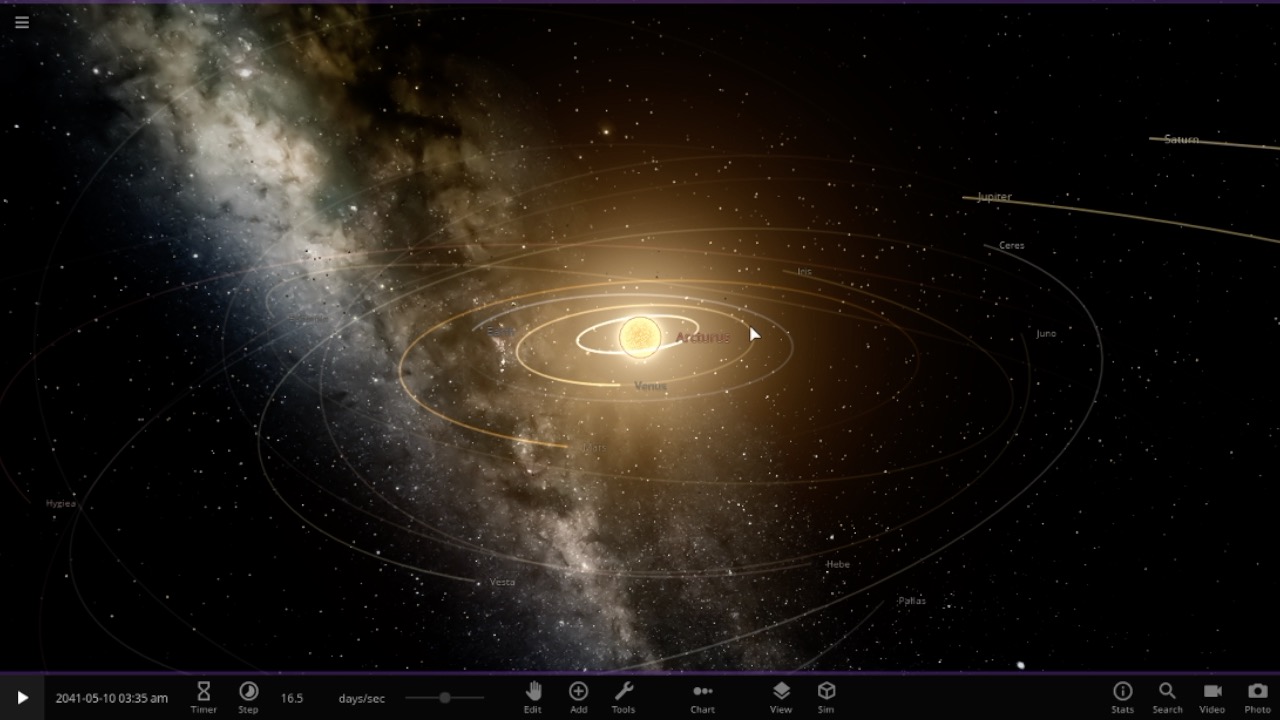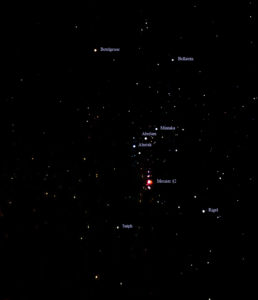Here at Astronomy for Change we often get questions, good questions, about various topics in astronomy. Here’s a sampling of some of the more common questions received as of late:
- Which planets we can see from earth
- What star did sailors use to navigate?
- Why is Sirius so easy to find in the night sky?
- Why is the North Star so important?
- What is the brightest star in the world? (This question is asking what is the brightest star in the sky)
- What is the coolest color of a star?
- What is the hottest star in the universe?
Which planets we can see from Earth
The short answer to this question: is all of them. It stands to reason that if we couldn’t see them, we wouldn’t know they exist and thus, by virtue of our observations, we know they exist.
The ancient Greeks first recognized that the planets were different compared to the background stars.
“The Greek contribution to science and mathematics, specifically to astronomy, is widely known and characterized from the start by the search for rational, physical explanations for observed celestial phenomena, phenomena such as the motions of the planets or “Wandering Stars”, as the Greeks referred to them.”
Two immediate differences were apparent to the Greeks:
- Compared to the much more distant stars, the planets had a more steady light. The stars are considered “point sources” of light because of their great distances while the planets are tiny disks and thus, “twinkle” less. Although the planets appear as “stars” to the eye, they aren’t “point sources” thus, their light isn’t subject to the earth’s atmospheric turbulence as much as the stars.
- The planet’s relative positions to the stars change on a daily basis as they moved in their orbits around the sun. This heliocentric model was first proposed by the Greek Astronomer and Mathematician Aristarchus of Samos (~200 BCE). The Greeks observed all the planets from Mercury out to Saturn, the last of the “naked eye” planets. The next planet, Uranus, requires a telescope to be seen and was first discovered by the great Anglo-German astronomer William Herschel in 1781. The remaining planets, Neptune and Pluto, like Uranus, both require a telescope to be seen. Neptune was discovered sixty five years later in September of 1846 through the collaboration of a French Mathematician and a German Astronomer and the story surrounding its discovery is quite interesting and will be the subject of a future article. Pluto was discovered 84 years later in the winter of 1930 by the famous American astronomer Clyde Tombaugh at the Lowell Observatory in Flagstaff Arizona.
Why is Sirius so easy to find in the night sky?
Sirius is so easy to find because it’s the brightest star in the sky as seen from both the northern and southern hemispheres. This is so for two very important reasons:
1) Sirius is among the five closest stars to the sun at less than 9 light years distant – remember, one light year is the distance light travels in one year and
2) Sirius is 25 times as luminous as the sun. A star’s luminosity is its total radiant output and so, a star such as Sirius that is both close and luminous would be very bright indeed!
It is important to note though, that there is a price to pay for this luminosity. There is a close relationship between a star’s mass and its luminosity – the more massive a star is, the more luminous it is; however – and this is where the price is paid – its lifetime is significantly shorter. The more luminous a star is – and thus, the more massive, the shorter its lifetime. A star such as Sirius will live about 10% as long as the sun.
Sirius is the head of Canis Major, the Great Dog who is standing on its hind legs to the east of the great hunter of the winter sky, Orion.
Why is the North Star so important?

The 23.5 deg. polar tilt of the earth, currently aligned with the North Celestial Pole (NCP) and closely oriented towards the “North Star”, Polaris.
Polaris has no intrinsic importance unto itself. It is a moderately bright star that happens to lie close to the North Celestial Pole, the imaginary point on the sky above the Earth’s North Pole and hence, its common name as the “North Star” or the “Pole Star”. Polaris’ location holds a singular importance to observers in the northern hemisphere, however. It provides a stellar guidepost, allowing those observers to determine true north and thus all other directions and secondly, and equally important, it allows those observers to determine their latitude by simply measuring Polaris’ elevation above the northern horizon.
It should be pointed out that Polaris was not always our “North Star”, nor will remain as such indefinitely. The earth rotates once every 24 hours or with a period of one solar day. It also “precesses” or “wobbles” such as a toy top does but with a period of 26,000 years. This “Precession of the Equinoxes” causes the North Celestial Pole to change accordingly and thus, point to a different location on the sky. In 13,000 years, brilliant Vega will be our “North Star” and then, 13,000 years hence, Polaris, again will be our “North Star” (see illustration).
What is the brightest star in the world? (Presumably, this question is asking what is the brightest star in the sky)
Since Sirius is the brightest star “in the sky”, the answer to this question is the same as the answer to the question “Why is Sirius so easy to find in the night sky?”
Beginning with the star Arcturus, the brightest star in the Northern Hemisphere and in the constellation Bootes, the Herdsman, please see our first installment in a ten part series discussing as many of the Brightest Stars.
What is the coolest color of a star?
The “coolest color” of a star would be red. The color of a star is directly related to its “effective temperature”, the temperature of its photosphere or stellar disk (stars don’t have solid surfaces). These red stars are cool for a variety of reasons. Whether they’re red dwarfs or red giants, their photospheres have an effective temperature of about 3,500 degrees (Kelvin). The internal core temperature of a star, the place where the star’s energy is produced through thermonuclear fusion reactions, is measured in the millions of degrees from 15 million degrees Kelvin for the sun up to 100 million degrees for hotter, more massive stars.
First, most stars in the universe, approximately 70%, are cool, low-mass “red dwarf” stars, stars that are cooler and smaller than our sun and thus, will live much longer than our sun. Their lifespans are measured in the 100 billion to one trillion year range for very low-mass stars.
Second, as a star nears its end of life, it will expand and cool and we can use our sun as a good example here (at one solar mass, the star Arcturus is a great example). In about 3 billion years hence, the sun will undergo this change, expanding and cooling and, in the process, engulfing the planets Mercury and Venus and come perilously close to earth. As it expands and cools, its color will change from yellow to orange and finally, to red. Following this “Red Giant” phase, the expanding shell of gas that used to be the sun’s photosphere (disk) will continue expanding, becoming increasingly thin and tenuous until it disappears into the vacuum of space. What will remain is a “White Dwarf” star, a super-hot ember of what used to be our sun’s thermonuclear core.
Some examples of red giant stars that are readily visible in our sky are Betelgeuse, visible in the winter sky as Orion’s right shoulder (see image below), Arcturus, the brightest star in the Northern Hemisphere after Vega and Antares, the heart of Scorpius, the scorpion, visible during the summer months as one looks towards the south in the Northern Hemisphere.

The star Arcturus replacing the sun at the center of our Solar System. Image credit: the Author via Universe Sandbox
Arcturus is a good example of what our sun will be like in 2.5 billion years hence at an age of 7.1 billion years. By contrast, our sun has an age of 4.6 billion years, a star separated in time from Arcturus by only 2.5 billion years. Arcturus has the equivalent mass of the sun but 170 times its luminosity due to its enormous size of 25 times the sun’s radius. Betelgeuse, by contrast, is enormous at 1,200 times the sun’s radius and a corresponding luminosity of 100,000 times that of the sun due to its enormous size! We’ve discussed “core collapse” supernovae in a previous article and Betelgeuse is one such supernova candidate. It’s uncertain when it will ultimately “go supernova” and time is not on its side but it will be sooner rather than later perhaps now or within the next 10,000 years.
What is the hottest star in the universe?
The hottest stars in the universe are luminous blue stars. The effective temperature of these stars’ photospheres is between 11,000 degrees Kelvin to over 20,000 degrees for the hottest of the stars. Remember, this is the star’s “surface” temperature; their internal “core” temperature is measured in millions of degrees.

Normal (1-1) eye view of the the winter constellation Orion, showing the stars, Betelgeuse and Rigel and others. The iconic “Great Nebula In Orion” can be seen in the hunter’s sword. Image credit: the author, 1970
The previous question asked about the color of the coolest stars and it was red. The color of the hottest stars is blue. Since the universe is so vast, one cannot say that any particular star is the “hottest”. What we can say is what types of stars are the hottest. These hot, blue stars live out their lives on time scales measured in millions rather than in billions of years such as our sun.
One such star is Rigel with an effective photospheric temperature of 12,500 degrees and an estimated age of about 8 million years. Like Betelgeuse, it is in the winter constellation Orion (see image) as his left knee and also, like Betelgeuse, Rigel will end its life in spectacular fashion as a supernova. With an enormous mass of 25 times that of the sun, it is 220,000 times as luminous and almost 100 times its size!
We’ve published the first in a three-part series of articles and videos describing the the dynamics and lifetimes of these various stars.
Related articles:
The Ten Brightest Stars (and where they are, with video) – 1. Arcturus
The #Sun and other #Stars, How They Shine and #Evolve – Part I (#Video)
Some Thoughts about Summer, Arcturus and the Future
Reflections on Arcturus, The Sun and the Changing Seasons
Where are the five brightest stars in our sky?
In a new initiative geared towards Astronomy and basic Science Education, we’ll be discussing any and all new questions that come in so please check regularly.




